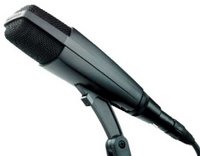 [geek post]
[geek post]Took the day off work last Wednesday to go on the "mixing techniques" course run by Mark Payne at SFL in Reading. I had been on his "basic acoustics for sound engineers" course earlier this summer and found it very useful, not least just to get you to stop and think about what was actually physically happening to the sound in a room when you position your speakers in a certain way. (Have had some really positive comments about my sound since I went on that course)
Having not really been on any proper training on mixing techniques, I found the course very useful, both encouraging (confirming correct theory and techniques I have built up over the years) and challenging (suggesting alternative "best practice" techniques to correct bad habits I had picked up)
The main area of challenge for me was setting the gain structure of a desk... there seems to be two schools of thought on this. I had always been told that when sound checking a channel, you should first set your gain/trim pot to give a full (but not clipping) signal, then bring up your faders as required. (I first learnt on a desk with no pfl, so you would bring up the gain until the clip light lit, then back off a few dB). This can result in your faders being all over the place when mixing depending on what's on that channel (like in the picture above). Mark suggested that this was not the way pros would run a desk, and that if you looked at their desks, all the faders would be at a similar level (almost a straight line). This would be achieved by first setting the fader to 0 or perhaps -5dB (depending on the desk and how much headroom you required) and then adjusting the gain until that channel was as loud as required (not simply relying on the meters - except to check that the gain setting required wasn't clipping).
Now I'm not sure which is right, I had been told that one advantage of doing it the way I was doing it was that all outboard and monitor sends were being sent a similar level (due to all gains across the desk being set similarly, then only faders adjusting relative volume in the main mix.) However, if this isn't right, I guess I will have to try and practice the other method (feels a bit cumbersome at the moment) and get those faders in a nice straight line in the future!
Will welcome any comments/advice - especially if you happen to do sound for one of the biggest rock bands in the world ;)
[/geek post]
Had a pretty relaxing but exciting weekend. Took Emma out to dinner at The Basement on Friday night for our first official proper date as a couple. Proper nice food and great company :)
Saturday helped Em with a few jobs around the house and managed to fit in a little trip up to a very windswept Burton Dassett in the evening.
Sunday night, after church, a few of us took over the corner of the pub and played Lost Valley of the Dinosaurs - good fun although slightly frustratingly it was called a draw in the end (We so should have won!)
Saturday helped Em with a few jobs around the house and managed to fit in a little trip up to a very windswept Burton Dassett in the evening.
Sunday night, after church, a few of us took over the corner of the pub and played Lost Valley of the Dinosaurs - good fun although slightly frustratingly it was called a draw in the end (We so should have won!)
[mega quick blog post]
Had a pretty exciting weekend. Those in the know will know what I'm talking about ;)
[/mega quick blog post]
Had a pretty exciting weekend. Those in the know will know what I'm talking about ;)
[/mega quick blog post]
 My lovely Sennheiser MD421 microphone is officially dead! We noticed that it sounded a bit funny at the gig last weekend and swapped it for something else (at first I blamed the guitarist's knackerd Peavey guitar amp), but I tested it properly last night and as soon as you put it anywhere near something that's producing noise at any more than a moderate volume it just distorts and produces a farting noise :(
My lovely Sennheiser MD421 microphone is officially dead! We noticed that it sounded a bit funny at the gig last weekend and swapped it for something else (at first I blamed the guitarist's knackerd Peavey guitar amp), but I tested it properly last night and as soon as you put it anywhere near something that's producing noise at any more than a moderate volume it just distorts and produces a farting noise :(Why is it that my most expensive mic (and the one that's meant to be the most robust) is the first one to break?
However, do not fear, all is not lost (yet). I'm going to be giving it to the lovely men at Manor Electronics to see if they can work their magic and restore it to its former health... I for one will be keeping a bedside vigil throughout the operation!
